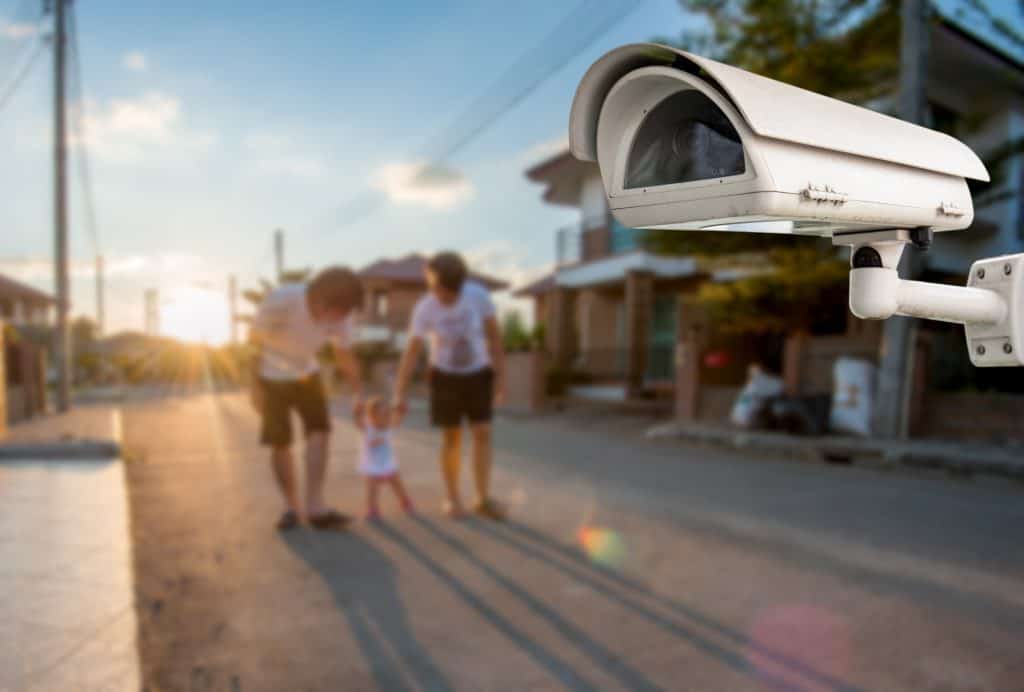
Security cameras can be one of the best tools for not only catching criminals, but also for deterring them from targeting you and your home.
But where exactly should you install those security cameras to be most effective? Sit tight, we’re about to cover that here!
The FBI’s crime statistics
Because of these facts, most people will tell you to install a camera above each door of the house. Place it up high, 9ft or more off the ground if possible. Make sure you get a camera with a wide enough angle and point it in the direction to have the highest probability of catching someone approaching the door. Keep in mind that they might now approach from the sidewalk. But even if you do that, is that really enough to cover all points of entry to your home?
Let me tell you about some of the best places you can install a security camera inside your home to have the best effect.
Main Living Areas
A lot of newer homes and remodeled homes are built with open floor plans. But even if your house wasn’t designed this way, the concept still works. The nice thing about the open floor plans is you can capture more entrance points and more space with fewer cameras.
Install a camera in the main living spaces in your home, and point them toward potential entrance points, like doors and windows. This is especially important on the ground level of your home. You’ll want to make sure to get cameras that can capture a fairly wide angle to get as much of the room as possible.
By installing cameras here, you fulfill multiple purposes. First, you can see what sort of activity is going on in your home. If you have a nanny or babysitter, it’s always nice to have the comfort in knowing that they know they’re being recorded. If your teen likes to sneak out, they’ll think twice knowing they’re likely to be caught. And it’s nice that a lot of security cameras have a feature that they only turn on when there’s activity, so you don’t have to watch through hours of recording to find out what’s been going on.
Second, these cameras will be more effective in catching intruders who might have bypassed any outdoor cameras you have. Think about it, an intruder may be able to avoid a security camera outside your front door by approaching from a different angle. But once they’re inside, it’ll be impossible to avoid that camera pointed right at the doorway.
That’s why I recommend that you have them in your main living areas, particularly those with doors and windows to the outside. Anyone who breaks in through one of those entrances stands an extremely high chance of being caught if you have cameras pointing right at them.
Covering All Entrances
Not all entrances to your home can be covered by those cameras in your main living areas. But those entrances should be covered too. We talked about this in the last section, but the idea here is that intruders may be able to avoid being identified by your outdoor cameras. But to get inside, they have to go through one of only a handful of entrances (windows and doors). Which means that if you have a camera that covers your entrances from the inside, it will be hard for an intruder to avoid them.
Hallways and Stairways
If an intruder manages to get inside and avoid being identified on your camera, the next place for them to get caught will be in hallways. If you have a hallway that an intruder would have to walk through to get to your valuables, then they’ll be boxed in by the walls of your home. This means they’ll be forced to walk in certain places. A camera pointing at those places is most likely to catch them.
This is particularly important if you have a basement that you didn’t cover with cameras. If your basement is unfinished, you may not be as worried about an intruder getting in down there. But basements can sometimes be easy access points to the rest of your house. However, if you have a camera in the stairway from the basement to the ground level, an intruder will be caught on camera.
Garage
Garages are probably the most overlooked room in the house when it comes to security. Garages can be really easy to break into unless you secure them properly. Plus, a lot of us store a lot of valuable stuff in the garage. Since the door from your garage to your house probably doesn’t have a deadbolt, you only have a simple door knob lock keeping intruders out of your home. This makes your garage a pretty vulnerable entrance to your home.
If you have a door to your garage other than the main garage door, make sure your camera can see it clearly. Make sure it can see the windows too. You’ll also want a camera viewing your main garage door unless you lock it up when you’re inside. That may take a second camera depending on how your garage is laid out, but believe it or not even roll-up garage doors can be pretty vulnerable to break-ins.
Nursery
If you have an infant that you still monitor with a baby monitor, adding a security camera can give you a lot of comfort. A lot of modern security cameras can be accessed from your smartphone or tablet, which gives you the comfort of being able to see what’s going on in your baby’s room from anywhere. You can even set your phone to alert you when there is activity on that camera. This suggestion is less about intruders and more about infant safety. Knowing what’s going on while they’re napping or playing in their crib can bring you a lot of comfort and help you prevent potentially dangerous situations.
Conclusion
I know it sounds like I’m suggesting that you cover every square inch of your home, but that’s really not the point. The idea is that you need to cover the entrances of your home. But if your home has a lot of windows or entry points in the basement or garage, it might be easier to cover the hallways and stairways that connect to those places rather than the entrances themselves.
You probably don’t need a camera in your 2nd story bathroom with a single window, or in every bedroom. Lock those windows when you’re not around, and cover those entry points with a single camera in the hallway outside those rooms. Most intruders really don’t want to be caught, and for that reason, they don’t tend to enter through occupied bedrooms.

